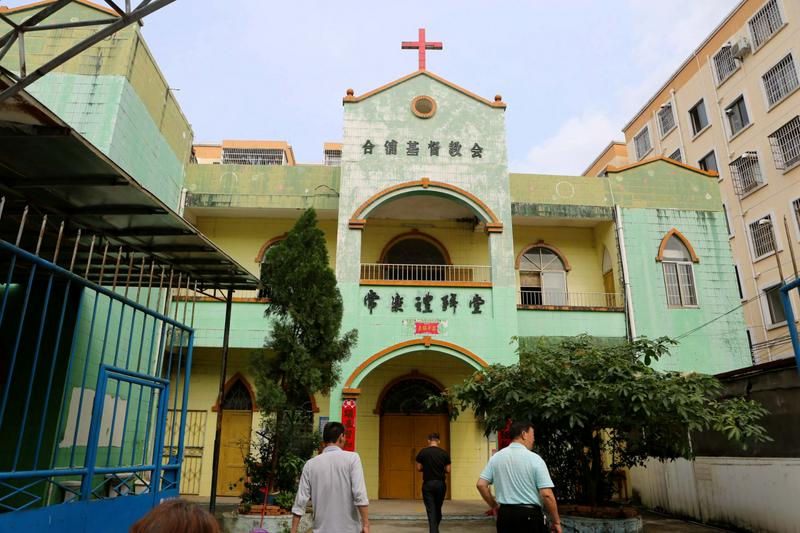In the town of Changle, Hepu County, Beihai City, Guangxi Zhuang Autonomous Region, stands a centennial church, which serves as a testament to the introduction of Christianity in the Hepu region.
The Church of England first introduced Christianity to the county in 1886, then did the Berliner Missionswerk in 1889, and the Pentecostal Church of North America in 1910. These three denominations established their own churches and service institutions in Hepu County, which deeply influenced the local culture. Additionally, branch churches or preaching stations were set up in the towns of Changle, Nankang, Fucheng, and Dangjiang.
Elder Luo Siqiong is the third generation of pastors at Changle Church, which British missionaries constructed in 1905. It was a two-story brick-and-wood structure with a floor area of 244.93 square meters (0.06 acres) and a construction area of 361.43 square meters (0.089 acres). The newly constructed church now has an approximate usable floor area of over 500 square meters (0.124 acres). In 1943, British missionaries sold it to the Berlin Missionary Society, which built a structure locally referred to as the "German Building" in Hepu County, which is now located within the Hepu Huanzhu Hotel.
The current Changle Church was originally Changle Gospel Church, where Rev. Chen Lie preached sermons, and Pastor Luo Chuanhe (Elder Luo Siqiong's grandfather) served as a translator. The church established a school with over 30 students and a maternity ward, the latter was under the direction of a Christian woman by the name of Pang Guiying. Due to the backward conditions at the time, only thirty percent of childbirths were guaranteed. After the Chinese Revolution of 1949, foreign missionaries returned to their countries, and the government assigned Changle Health Center to take over the church. But all activities ceased during the Cultural Revolution (1966–1976).
It was not until 1982, after the implementation of the policies on freedom of religious belief, that the church gradually resumed gatherings. At that time, the church had only six elderly believers. In 1985, they began organizing gatherings at the home of a male believer named Luo Jiafu. With an increasing number of worshipers, there was insufficient space and a lack of pastors, so they had to meet at Zhongshan Road Church in Hepu County. Finally, in 1999, after policy implementation, the building property was returned to Changle Church, which was already in a dilapidated state.
To revive the church, with the help of Luo Jiafu, the church raised ten thousand yuan and borrowed money from Guangxi CC&TSPM and Beihai CC&TSPM, initiating the church's repair work. In 1999, the relevant authorities issued a legal certificate to Changle Church. Then they began the reconstruction of the church. After its completion in 2000, there were insufficient funds to settle with the contractors.
At the station of Guangxi CC&TSPM, Elder Luo Siqiong attended a year of voluntary training, during which a German Christian learned about the situation. Upon returning to Germany, he donated 250,000 yuan. After the completion of the rough building, there was still a funding gap for interior decoration. In 2007, a believer in the United States contributed 17,000 yuan to the church, and Guangxi's United Front Work Department allocated 130,000 yuan, for the decoration completed.
In 1935, Elder Luo Siqiong's grandfather, Luo Chuanhe, began his ministry here, and now it has become a legacy spanning three generations.
In this generation, after a year of training at Guangxi Bible School, Elder Luo Siqiong returned to Changle Church and took charge, having baptized over four hundred believers.
(The article is originally published by the Gospel Times.)
-Translated by Abigail Wu













